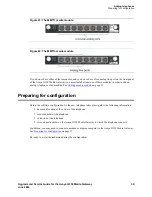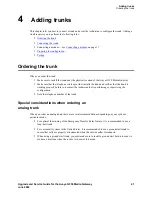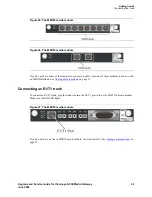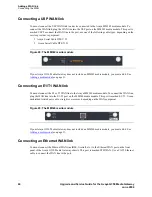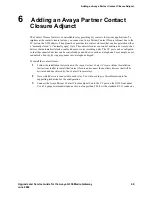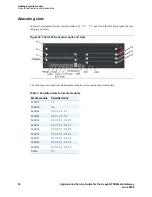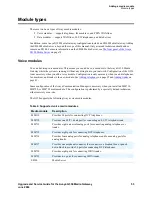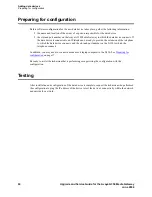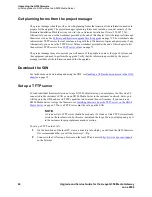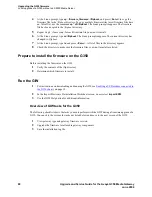
Adding a media module
Module types
Upgrade and Service Guide for the Avaya G350 Media Gateway
53
June 2004
Module types
There are two basic types of Avaya media modules:
•
Voice modules — support telephones, fax machines, and PSTN WAN lines
•
Data modules — support WAN lines, PoE IP telephones, and data devices
In addition, some Avaya G350 Media Gateway configurations include an S8300 Media Gateway. Adding
the S8300 Media Server is beyond the scope of this manual. Only a trained technician should add or
remove an S8300. For more information on the S8300 Media Server, see
The front panel of the Avaya
S8300 Media Server
on page 78.
Voice modules
You can hot-swap voice modules. This means you can add a voice module to the Avaya G350 Media
Gateway while the system is running, without any disruption to your network. Configuration of the G350
is not necessary when you add a voice module. Configuration is only necessary when you add telephones,
fax machines, and trunks to the new module. See
Adding telephones
on page 35 and
Adding trunks
on
page 41.
Some configuration of the Avaya Communication Manager is necessary when you install an MM710,
MM720, or MM722 media module. This configuration is performed by a specially trained technician,
either remotely or on-site.
The G350 supports the following Avaya voice media modules:
Table 4: Supported voice media modules
Media module
Description
MM312
Provides 24 ports for connecting DCP telephones.
MM710
Provides one E1/T1 trunk port for connecting an E1/T1 telephone trunk.
MM711
Provides eight universal analog ports for connecting analog telephones or
trunks.
MM712
Provides eight ports for connecting DCP telephones.
MM714
Provides four analog ports for analog telephones and four analog ports for
analog trunks.
MM717
Provides one amphenol connector that connects to a breakout box or punch
down block to provide 24 ports for connecting DCP telephones.
MM720
Provides eight ports for connecting ISDN trunks.
MM722
Provides two ports for connecting ISDN trunks.
S8300
Media Server

